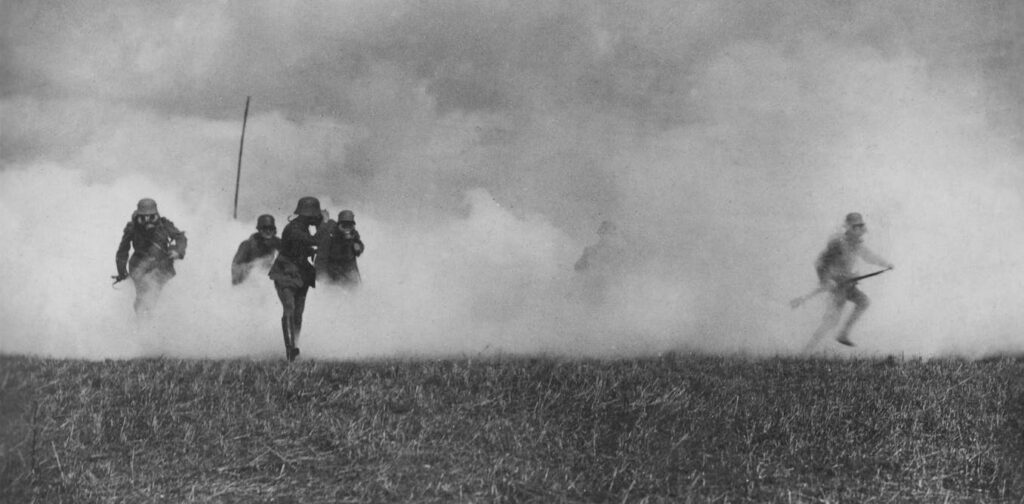
Chemical warfare remains one of the most devastating forms of conflict, leveraging toxic chemicals to disable, harm, or kill without physical confrontation. Over various conflicts, it has resulted in tens of thousands of deaths and affected over a million people through injury and long-term health consequences. As the threat of chemical weapons persists, materials scientists are exploring new technologies to better detect these lethal agents in the field.
Mustard gas, a notorious chemical weapon, is not a gas at room temperature but a yellow-brown oily liquid that can vaporize into a toxic mist. Its synthesis was refined into a more stable form by Viktor Meyer, gaining international notoriety during World War I. Despite international efforts to ban its use, the possibility of mustard gas being deployed in future conflicts cannot be entirely ruled out. Consequently, developing an easy and reliable detection method is crucial.
Health Impacts of Mustard Gas
Mustard gas inflicts damage at the cellular level. Upon contact with skin, eyes, or when inhaled, it dissolves in fats and tissues, penetrating the body swiftly. It transforms into a highly reactive form that binds to and damages DNA, proteins, and other cellular components. This irreversible damage can impair cellular function and lead to cell death.
Exposure to mustard gas can cause severe health issues, such as large, fluid-filled blisters, eye irritation leading to blindness, and respiratory damage. Symptoms often take hours to manifest, delaying treatment. Even minimal exposure can weaken the immune system and increase cancer risk due to DNA damage. The repercussions of exposure can extend to future generations, with studies indicating physical abnormalities in the offspring of exposed individuals.
Challenges in Detecting Mustard Gas
Current detection methods rely on sophisticated chemistry techniques involving expensive, delicate instruments unsuitable for field deployment. These laboratory-based tools are not practical for on-the-ground detection of toxic chemicals.
Researchers have made various attempts to improve detection techniques. Wearable electrochemical biosensors have been developed to detect mustard gas in liquid and vapor forms, providing real-time alerts. However, issues such as enzyme degradation and environmental noise have hindered their field application.
Another approach involves molecularly imprinted polymer test strips targeting thiodiglycol, a mustard gas breakdown product. These strips are affordable, portable, and easy to use, but they detect a byproduct rather than the agent itself, limiting their effectiveness.
A promising breakthrough in 2023 involved fluorescent probes that change color upon sensing the chemical. Despite their potential, these probes are susceptible to environmental interference, such as humidity and temperature, reducing their reliability in rugged conditions.
Innovative Approaches and Future Prospects
At Washington University in St. Louis, researchers like Makenzie Walk and Seth Taylor, under the leadership of Jennifer Heemstra and M.G. Finn, are working on developing a rapid, reliable detection method. Their strategy involves testing various molecular sensor designs on compounds modeled after specific chemical weapons. These sensors aim to trigger a cascade of reactions, producing a bright fluorescent signal in the laboratory.
The research focuses on identifying compounds that react optimally with mustard gas and determining the concentration required for detection. Understanding the chemical structure and reactivity will help select the right compounds for the detector, ensuring sensitivity to even small amounts of mustard gas while minimizing false positives.
Global Implications and Preventive Measures
While eliminating chemical weapons is ideal, the 1997 Chemical Weapons Convention, which bans their production and use, has not been adopted by all countries. Nations like Egypt, North Korea, and South Sudan remain outside this treaty. To deter the use of chemical weapons by non-signatory countries, international sanctions can be imposed, as demonstrated by the U.S. sanctions on Sudan following reports of chemical weapon use in 2024.
Even without active use, traces of chemical weapons may linger in the environment. Advanced detection technology can help identify these threats quickly, preventing further disasters. As scientists and global leaders strive for a safer world, real-time detection capabilities will enhance community preparedness and protection.





